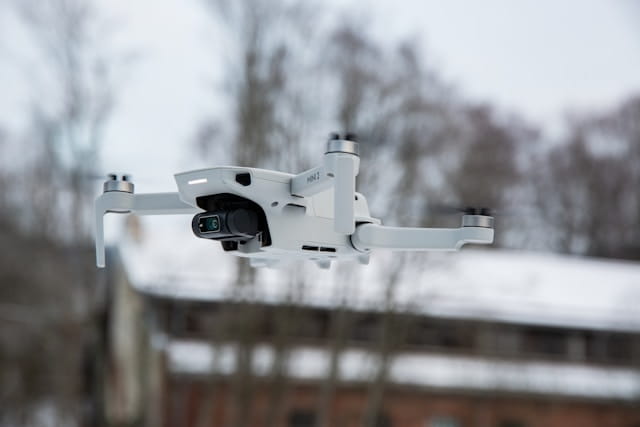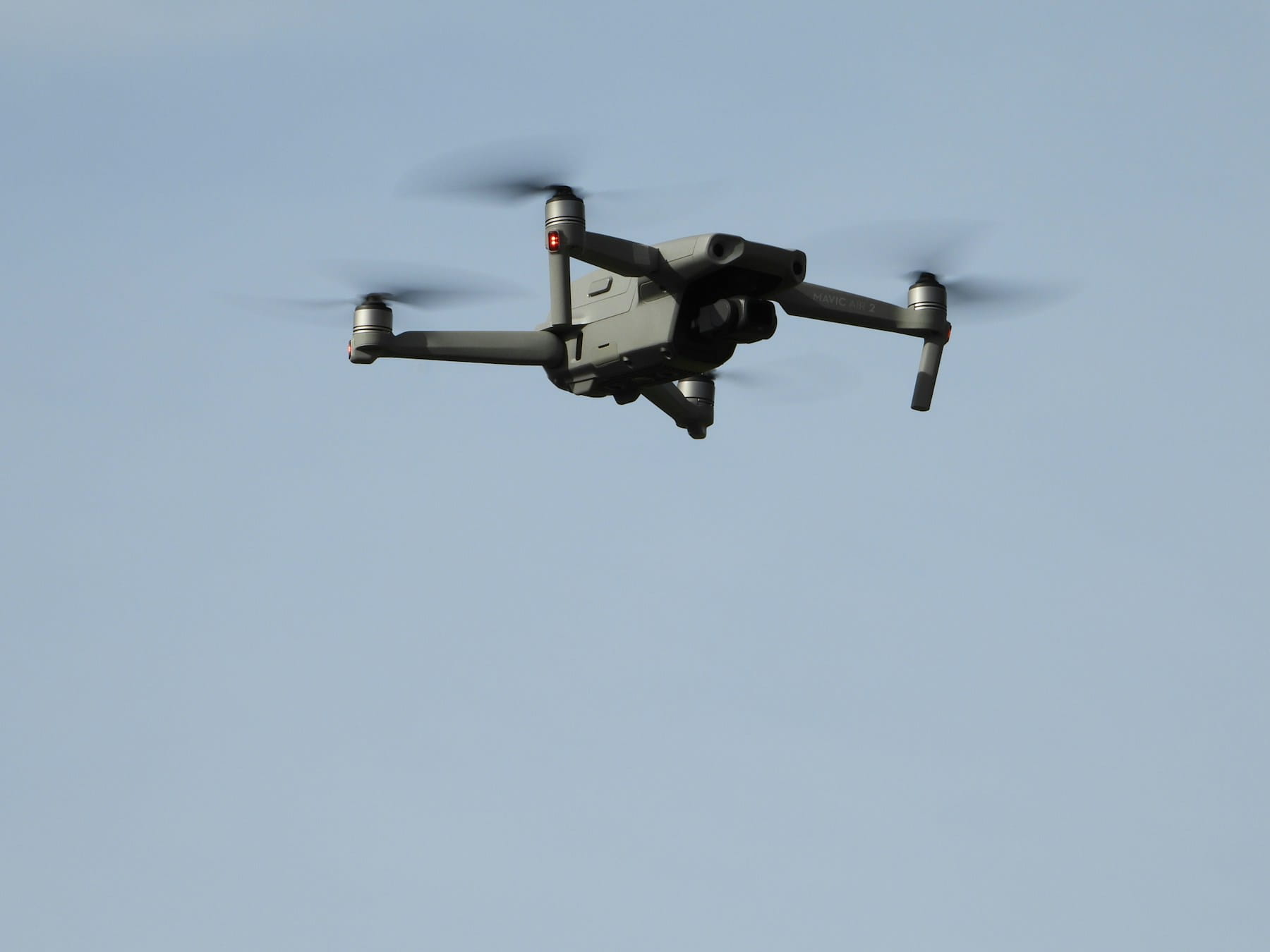Stop emailing files and sending Dropbox links. Give your drone clients secure access to their projects, flight data, and deliverables through a professional client portal.
It's Tuesday afternoon. You just finished a construction site inspection. Before you even land, your inbox fills up with requests. The general contractor wants updated photos. The owner needs survey data. The safety manager is asking about yesterday's flight logs.
Meanwhile, you're trying to remember which files you sent to who. Did anyone actually download those 500MB of images you emailed last week? Has that Dropbox link expired yet? There's no way to track any of it.
This happens every single day to thousands of drone operators. Email wasn't built for managing complex projects with multiple people and gigabytes of files. You end up with lost files, security problems, and endless "can you resend that?" messages.
There's a better way. Give clients their own login where they can see their projects and download what they need. No more email attachments.
The email problem
Here's what goes wrong when you try to share drone project files through email:
File size limits. Most email systems cap attachments at 25MB. A single inspection flight produces 2GB of images. So you end up using Dropbox, Google Drive, or WeTransfer. Now you have another system to manage.
Version control is a mess. Client asks about "those files from last Tuesday." Which Tuesday? Which files? Which version did you send them? Without a system to track this, you're constantly searching through old emails.
Security gaps. You send sensitive infrastructure photos through email. Client forwards them to someone who shouldn't have access. Now you have a liability problem.
Support requests pile up. "I can't find that link." "The download expired." "Can you resend those files?" Every request takes 10-15 minutes of your time.
You look unprofessional. Your competitors have branded client portals. You're still sending Dropbox links. When clients are choosing between providers, these details matter for premium contracts.
For anyone trying to scale their drone business, this communication overhead becomes a major bottleneck. If you're managing multiple drones across different projects, it gets exponentially worse.
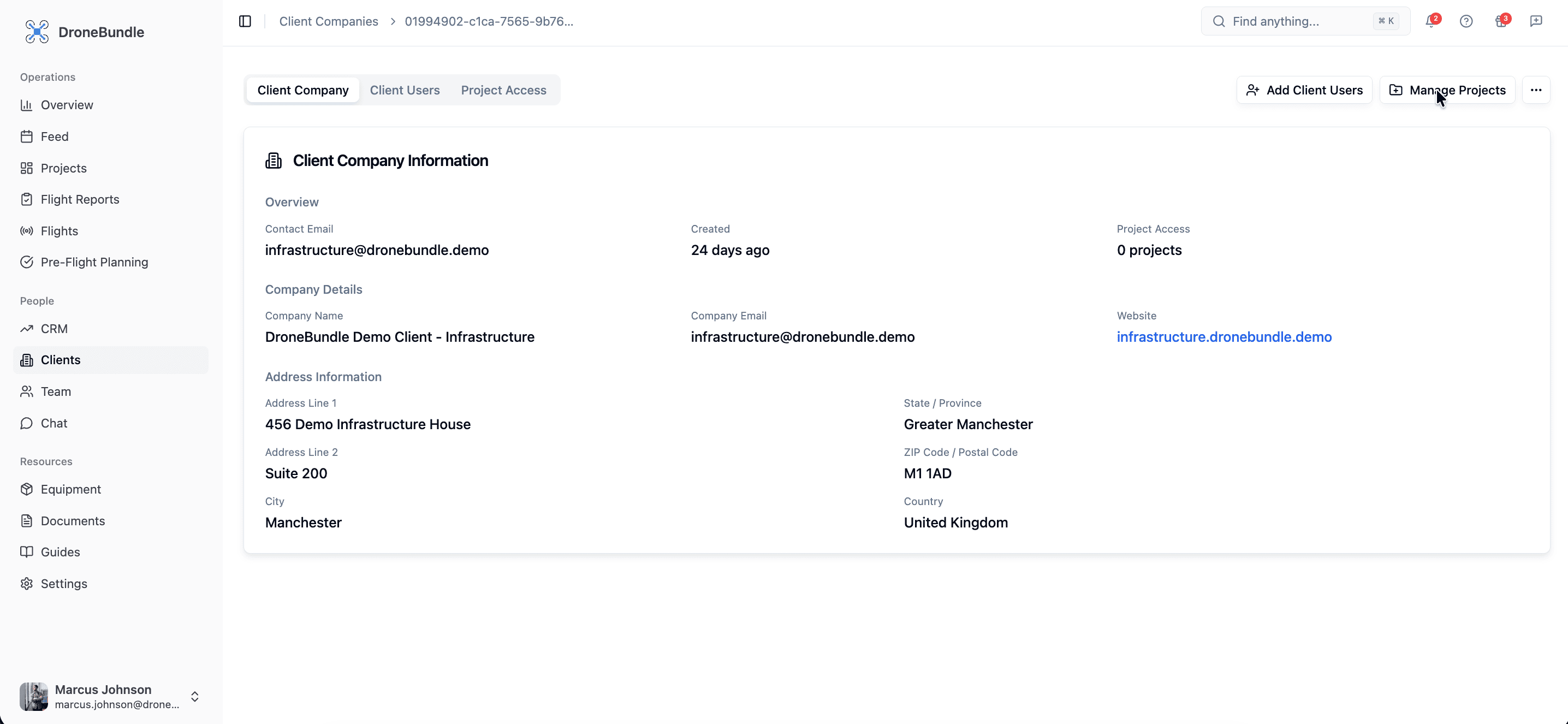 This is what a proper client portal looks like. Clients log in and see their projects, files, and flight data in one place.
This is what a proper client portal looks like. Clients log in and see their projects, files, and flight data in one place.
What you actually need in a client portal
Not all client portal systems are the same. Here's what actually matters.
Most generic client portals are built for agencies or consultants sharing documents. They don't understand drone operations. You need features that handle large file sizes, multiple stakeholders per project, and the specific workflows of aerial data collection.
If you're evaluating options or building your own system, focus on these specific capabilities. Miss any of these and you'll end up dealing with the same email chaos within a few months.
Company-based access (not just individual users)
Each client gets their own login. But here's the key thing most people miss: you need to organize by company, not just individual people.
Here's how it works. You create "Acme Construction" as a company in your system. Then you add their project managers, site supervisors, and whoever else to that company. When you give Acme access to a project, everyone in that company automatically sees it.
Add a new person to their team? They immediately see all the Acme projects. You don't configure anything. It just works.
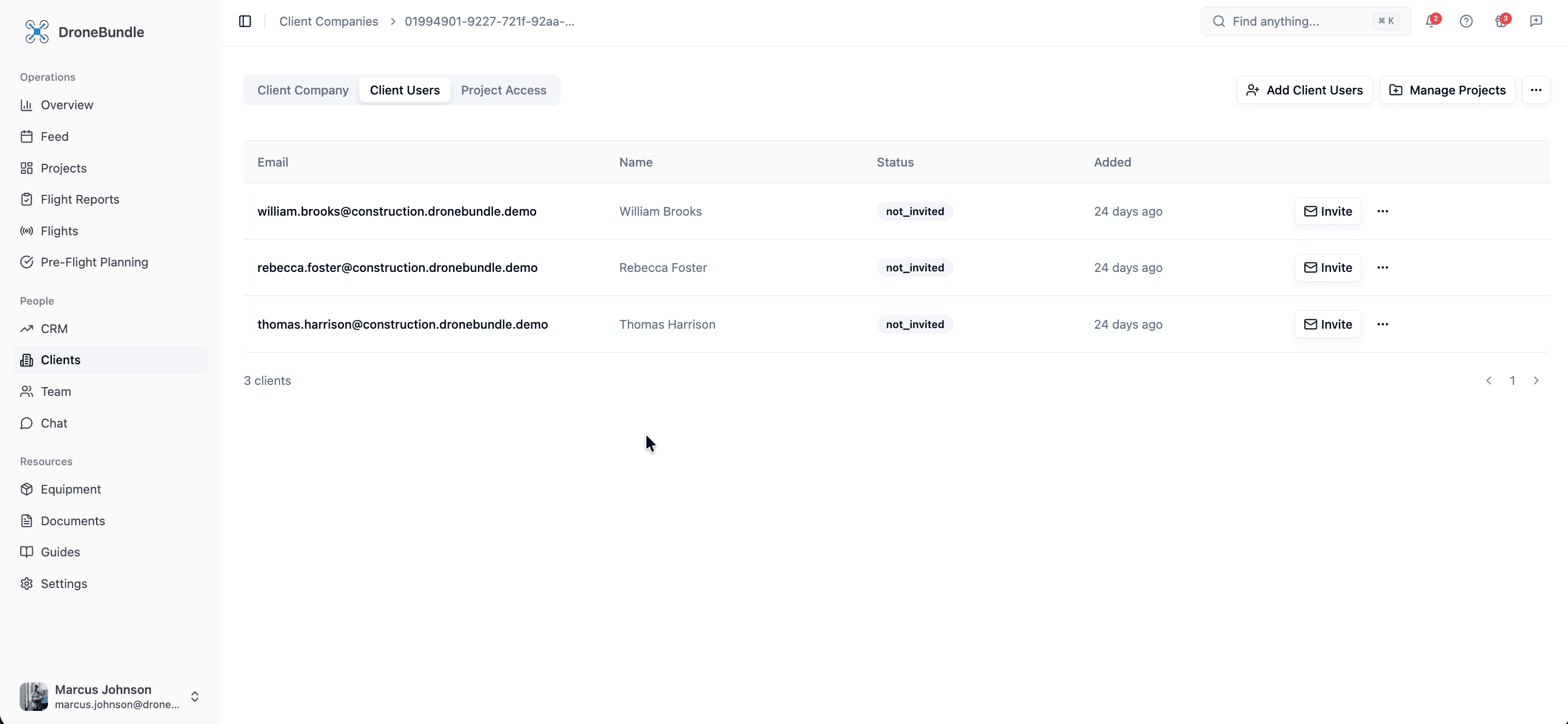 Managing access by company instead of individual users saves you hours of admin work.
Managing access by company instead of individual users saves you hours of admin work.
This is huge for construction projects where you might have 10+ people from the same general contractor needing access. Instead of setting up 10 separate users with 10 different permission sets, you set up the company once and everyone inherits the same access.
Projects organized the way clients think
Clients don't want to navigate through your entire operation. They want to see their projects and nothing else.
A construction company with three active job sites sees three project cards. Each one has that site's flights, files, and progress reports. Simple. Intuitive.
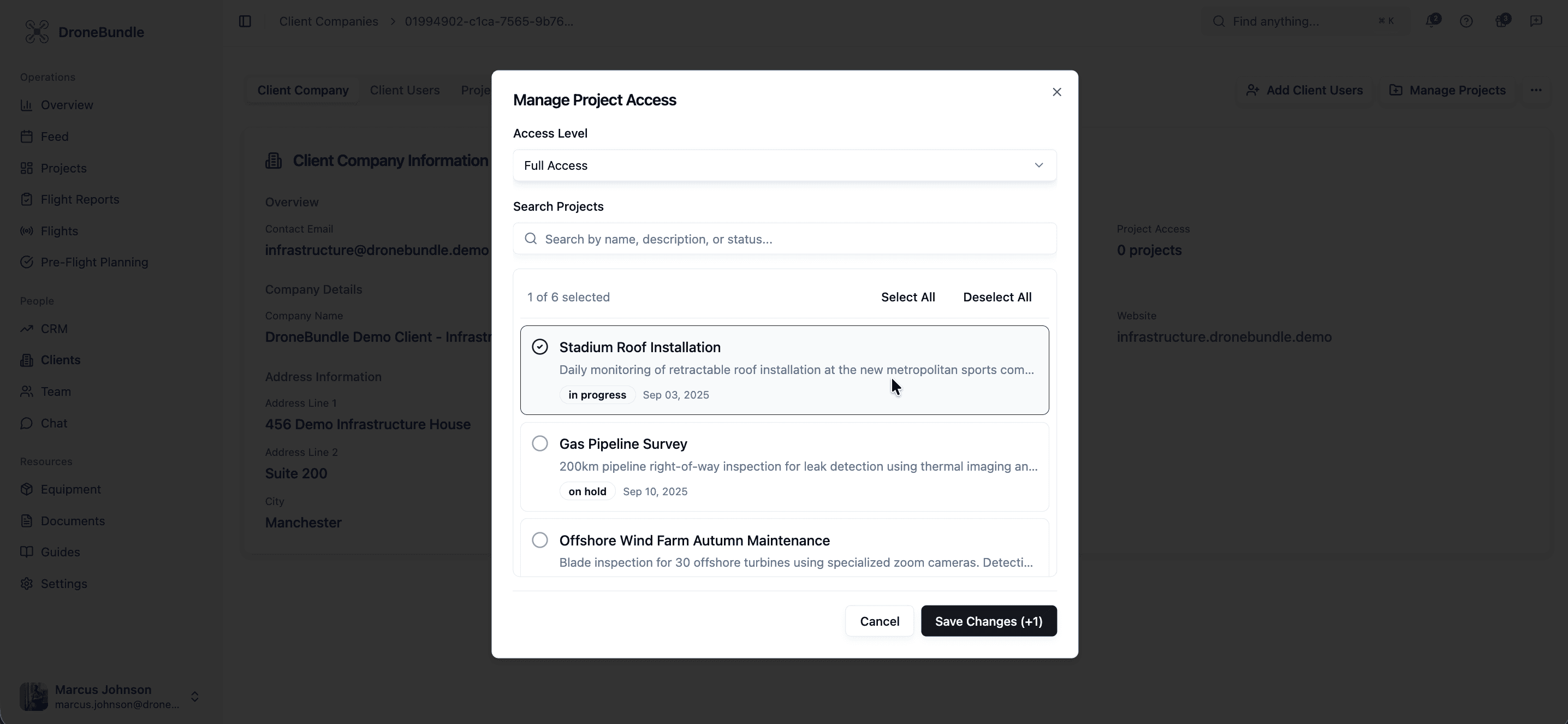 Clean project organization means clients find what they need without calling you.
Clean project organization means clients find what they need without calling you.
File management that works
Clients need to download files without hitting size limits or dealing with expired links. Everything should be organized by date, flight type, or whatever makes sense for the project.
For construction documentation, weekly progress reports stay in their own section. For surveying work, you can bulk download entire datasets. The system auto-organizes files when you upload them, so you're not manually creating folders.
This becomes especially important if you're also tracking equipment maintenance or other operational data alongside client deliverables.
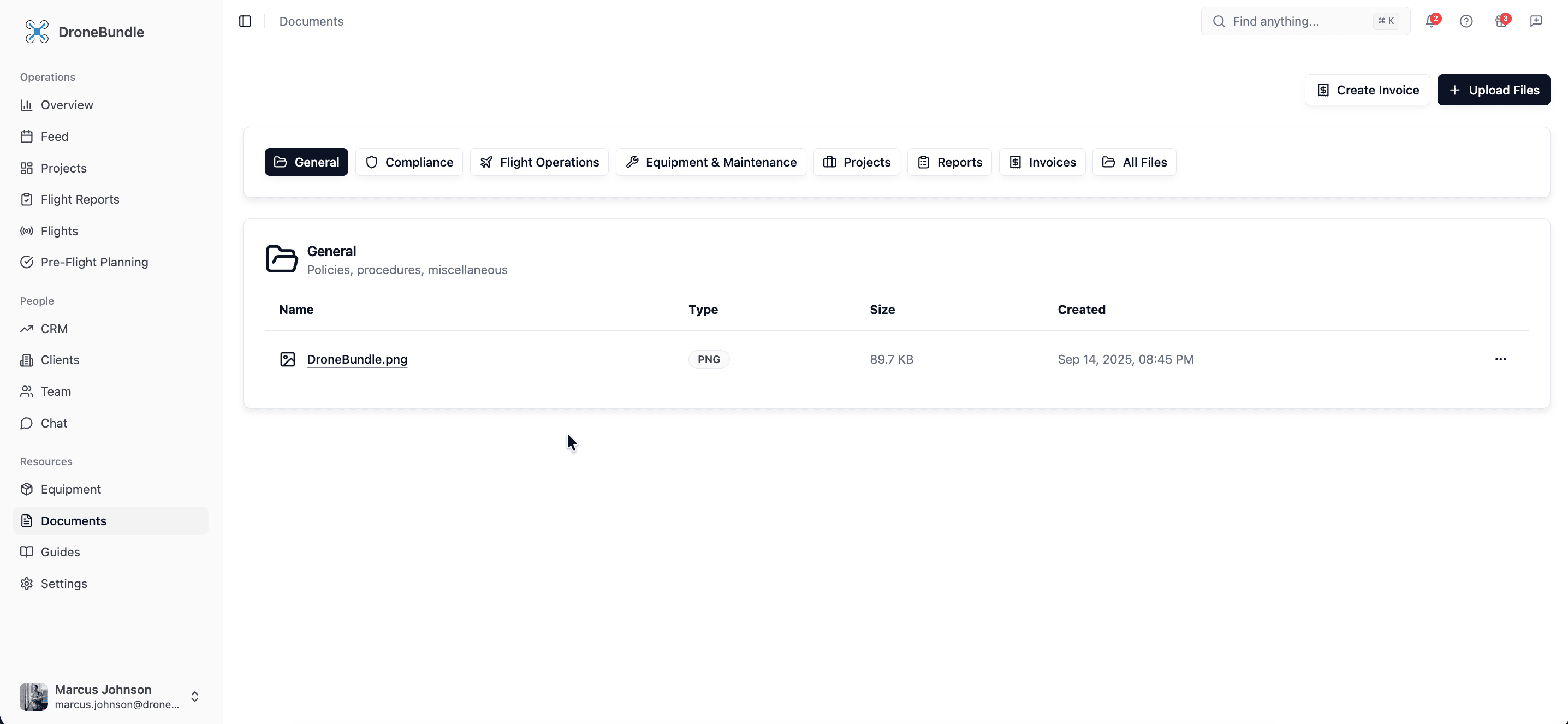 Good file organization means clients can find what they need on their own instead of emailing you.
Good file organization means clients can find what they need on their own instead of emailing you.
Flight logs for transparency
Share basic flight info with clients: date, duration, location, who flew it, weather conditions. It builds trust. They also need this for their own compliance docs and insurance claims.
If you're doing pilot hour tracking, this keeps accurate records automatically. For recurring work like power line inspections, asset inspections, or wind turbine monitoring, clients can see exactly what's been covered and spot any gaps.
How DroneBundle handles client access
Most drone operations software either doesn't have client portals, or they're bolted on as an afterthought. DroneBundle built it in from day one.
You create client companies. Give them access to projects. Their team members inherit permissions automatically. When you finish a flight and upload files, they appear in the client portal. You control what each company sees.
The company structure is the key. When "Acme Construction" gets added to a new project, their entire team sees it immediately. Add someone new to Acme? They get access to everything Acme has access to. No manual setup.
Instead of managing 10 individual users on a construction project, you manage 3-4 companies (general contractor, owner, architect, subcontractor). This significantly reduces administrative overhead.
When you upload files once, they're in both your system and the client portal. No duplicate work. No version control issues.
Setting up client access in DroneBundle
DroneBundle's client portal is built into the platform from the start. From the Clients page, you can create client company profiles with a company email and name. Once a client company exists, you can grant them access to specific projects.
When granting project access, you choose from five access levels:
- Full Access - Project details, jobs, files, and flight data
- Project + Jobs + Files - Project details, jobs, and project files
- Project + Jobs - Project details and jobs only
- Project + Files - Project details and project files only
- Project Only - Basic project information only
This granular control lets you share exactly what each client needs to see. You can modify access levels or revoke access at any time from the project's client access management section.
Client companies inherit their access automatically. When you add a new team member to a client company, they immediately see all projects that company has access to. This eliminates per-user configuration and scales naturally as client teams grow.
For sensitive work like construction inspections or cell tower work, client portals with audit trails meet compliance requirements. Insurance companies often require documented access controls for data sharing. Risk assessment procedures should include records of who accessed project data.
Why this matters for your business
In competitive markets, client experience is what separates you from everyone else. Two drone operators with identical equipment and skills? The one with better client access wins.
A proper client portal demonstrates professional operations and business maturity. This matters for enterprise contracts where procurement teams evaluate you based on your operational infrastructure.
The time savings add up. Most operators waste 5-10 hours per week on file-sharing support requests. When clients can help themselves, you get that time back for actual paid work.
But the biggest benefit? Clients who get professional service are way more likely to pay premium rates and expand contracts. The "you get what you pay for" mindset works in your favor when you actually deliver something better than email and Dropbox links.
Want to stop emailing files to clients?
DroneBundle includes client portal features in all plans. Set up your first client company in 5 minutes. See how much easier client communication gets when people can log in and access what they need.
Start your free 14-day trial. No credit card required.
Or book a demo to see the client portal in action. We'll also show you how DroneBundle handles mission planning and everything else in your workflow.


